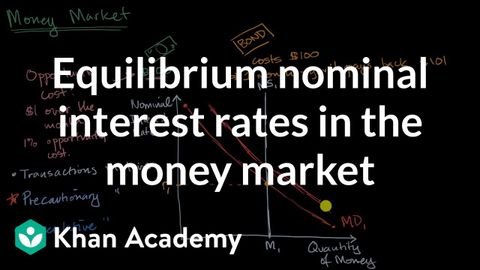貨幣市場の均衡名目金利|APマクロ経済学|カーンアカデミー (Equilibrium nominal interest rates in the money market | AP Macroeconomics | Khan Academy)
林宜悉 が 2021 年 01 月 14 日 に投稿  この条件に一致する単語はありません
この条件に一致する単語はありませんUS /ɪˈsenʃəli/
・
UK /ɪˈsenʃəli/
- v.t.(人を騙すために)ふりをする : 装う;仮定する : 推測する;(責任 : 任務などを)負う : 引き受ける
US /səˈner.i.oʊ/
・
UK /sɪˈnɑː.ri.əʊ/
- n. (c./u.)~へ行く手段;利用する機会;アクセス
- v.t.利用可能である : 使用許可を得る
- v.t./i.アクセス;アクセスする
エネルギーを使用
すべての単語を解除
発音・解説・フィルター機能を解除

